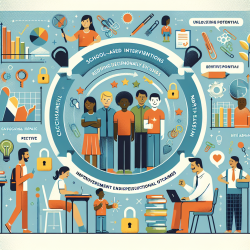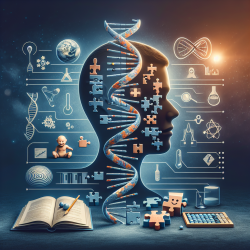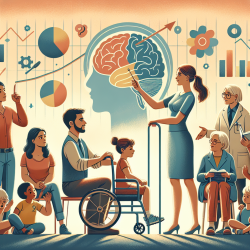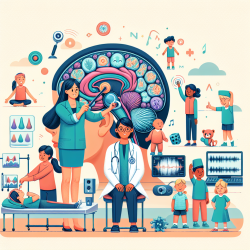As practitioners in the field of special education and speech therapy, it is crucial to stay informed about the latest research and strategies for identifying and treating language impairments in children. A landmark study by J. Eisenson offers invaluable insights into the distinctions and therapeutic approaches for developmental (congenital) aphasia and acquired aphasia and dysphasia in children. This article aims to distill key findings from Eisenson's research to aid practitioners in enhancing their diagnostic and treatment skills for these complex conditions.
Understanding Developmental Aphasia
Developmental aphasia, also referred to as congenital aphasia, represents a severe linguistic delay in children who do not exhibit signs of mental retardation or emotional handicaps. Eisenson emphasizes the importance of accurate identification to avoid misdiagnosis and inappropriate treatment. The challenge lies in the misidentification and consequent mislabeling of these children, leading to a lack of targeted intervention strategies.
- Key identifiers include adequate nonverbal intelligence, normal oral mechanism structure, absence of early emotional problems, and no evidence of hearing issues apart from spoken language.
- Developmental aphasia often stems from central auditory processing disorders, necessitating tailored therapeutic approaches focusing on auditory perception and processing skills.
Distinguishing Acquired Aphasia
Acquired aphasia in children, unlike developmental aphasia, occurs after a child has developed language skills normally but then experiences language loss due to brain injury or disease. Recognizing acquired aphasia involves understanding the child's pre-existing language capabilities and the impact of the cerebral pathology. This form of aphasia requires a different therapeutic approach, often involving re-acquisition of lost language skills and adapting to residual deficits.
Therapeutic Approaches
Eisenson's research underscores the importance of individualized therapy programs for children with aphasia, whether developmental or acquired. For developmental aphasia, interventions might focus on enhancing central auditory processing abilities and improving comprehension and production of language. In cases of acquired aphasia, therapy may aim to restore lost language functions and compensate for any residual impairments.
- For developmental aphasia, strategies include auditory discrimination training, phonological awareness exercises, and language enrichment activities.
- In acquired aphasia, therapy might focus on re-establishing language through repetitive practice, use of alternative communication methods, and cognitive-linguistic tasks.
Encouraging Further Research and Collaboration
Practitioners are encouraged to delve deeper into the nuances of developmental and acquired aphasia by engaging with Eisenson's research and other contemporary studies. Collaboration with colleagues across disciplines, such as neurology, psychology, and audiology, can enhance understanding and treatment of these complex disorders. Sharing experiences and outcomes can contribute to a richer knowledge base, leading to more effective interventions.
Conclusion
Identifying and treating developmental and acquired aphasia in children presents unique challenges and opportunities for practitioners. By applying the insights from Eisenson's research and adopting a collaborative, research-informed approach, therapists can enhance their ability to support children with aphasia and their families. Continuous learning and adaptation of therapeutic strategies are key to improving outcomes for this vulnerable population.
To read the original research paper, please follow this link: Developmental (Congenital) Aphasia and Acquired Aphasia and Dysphasia: Identification and Differential Diagnosis.










